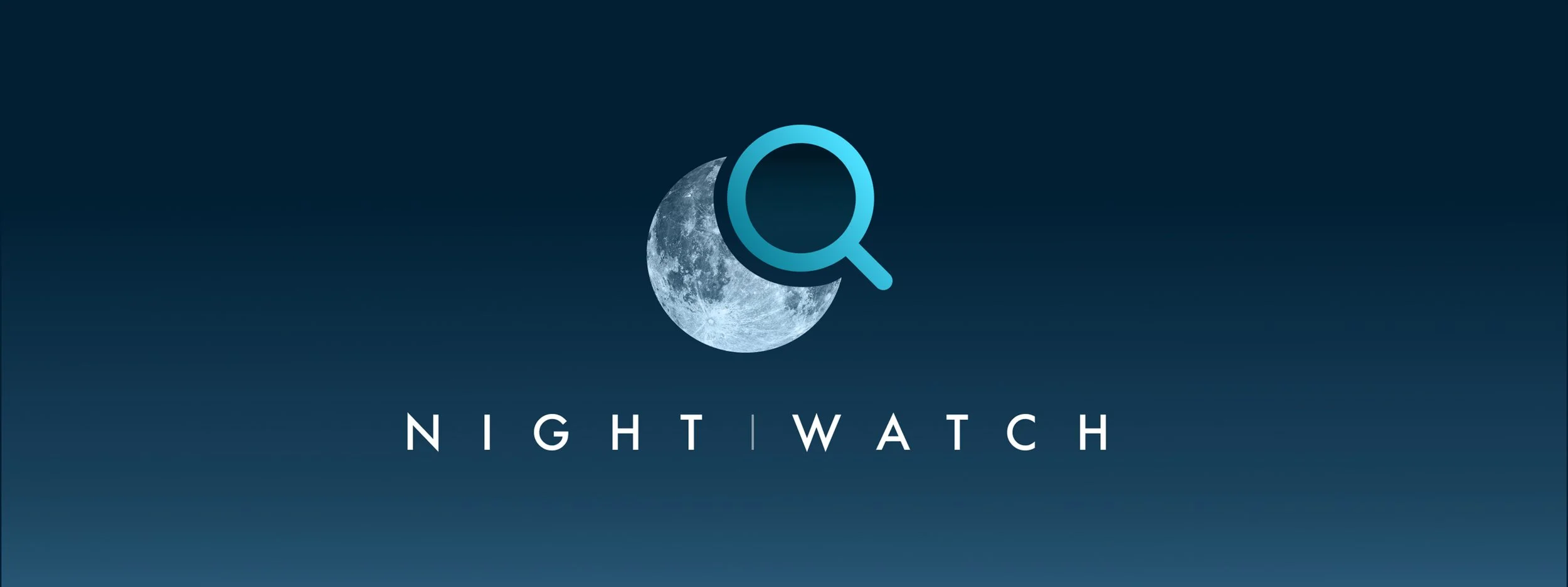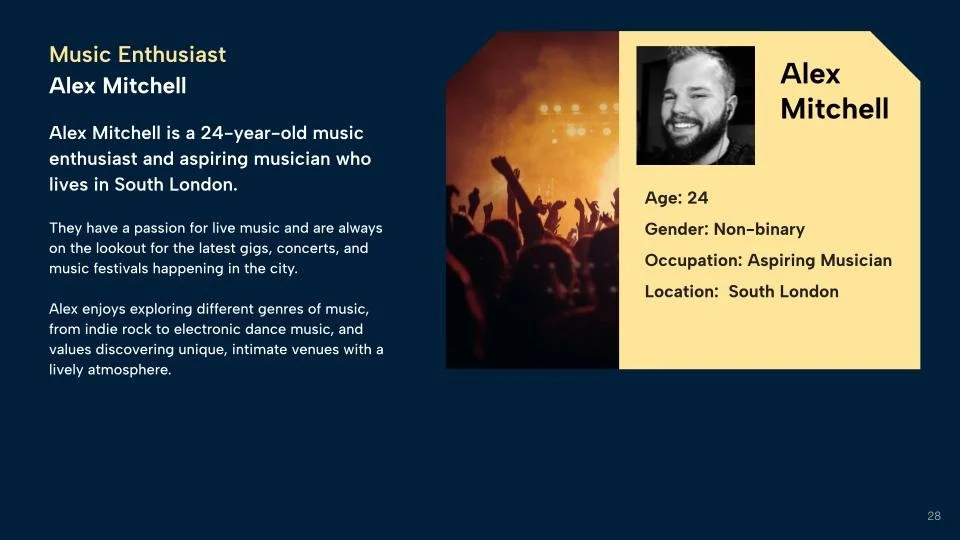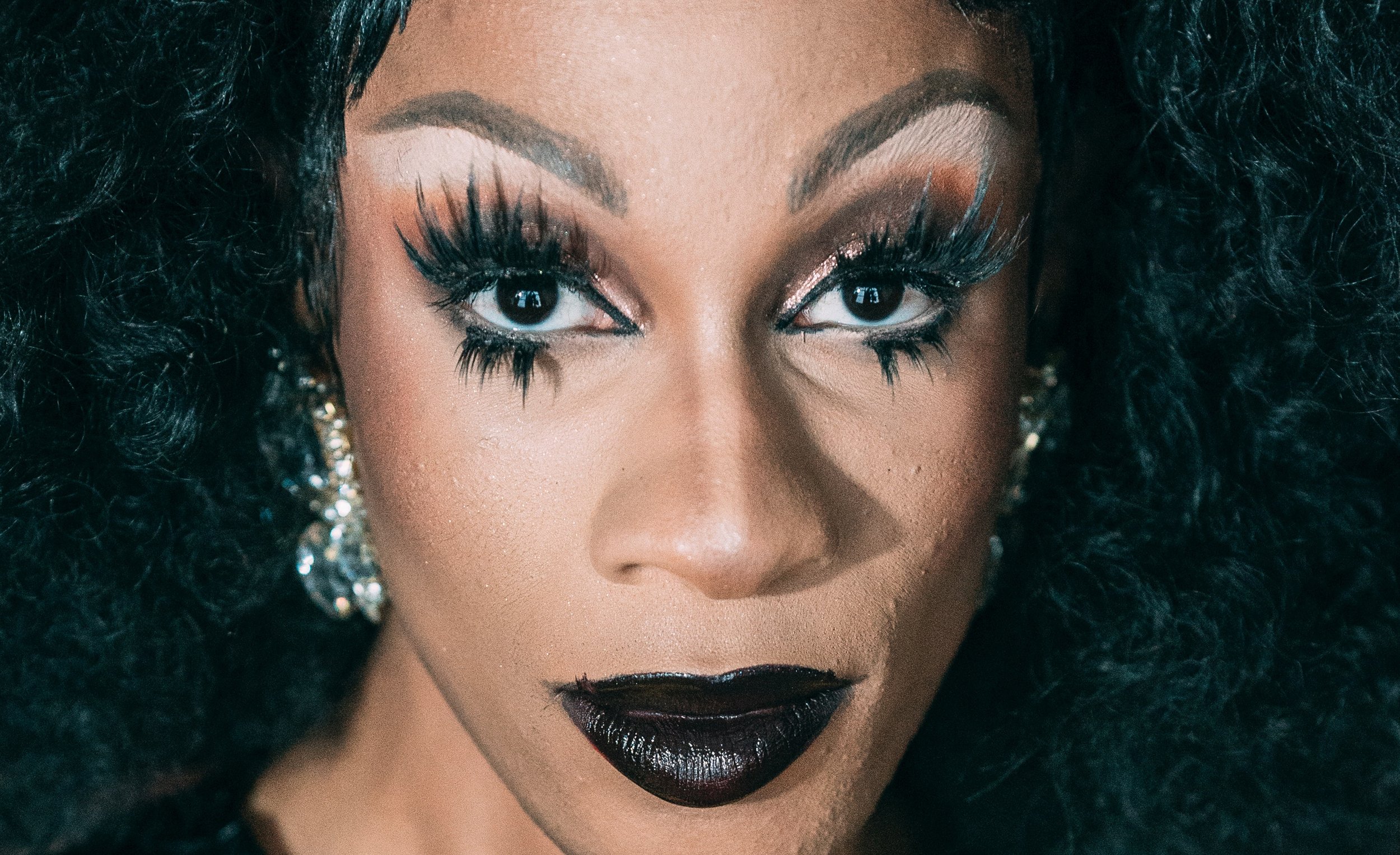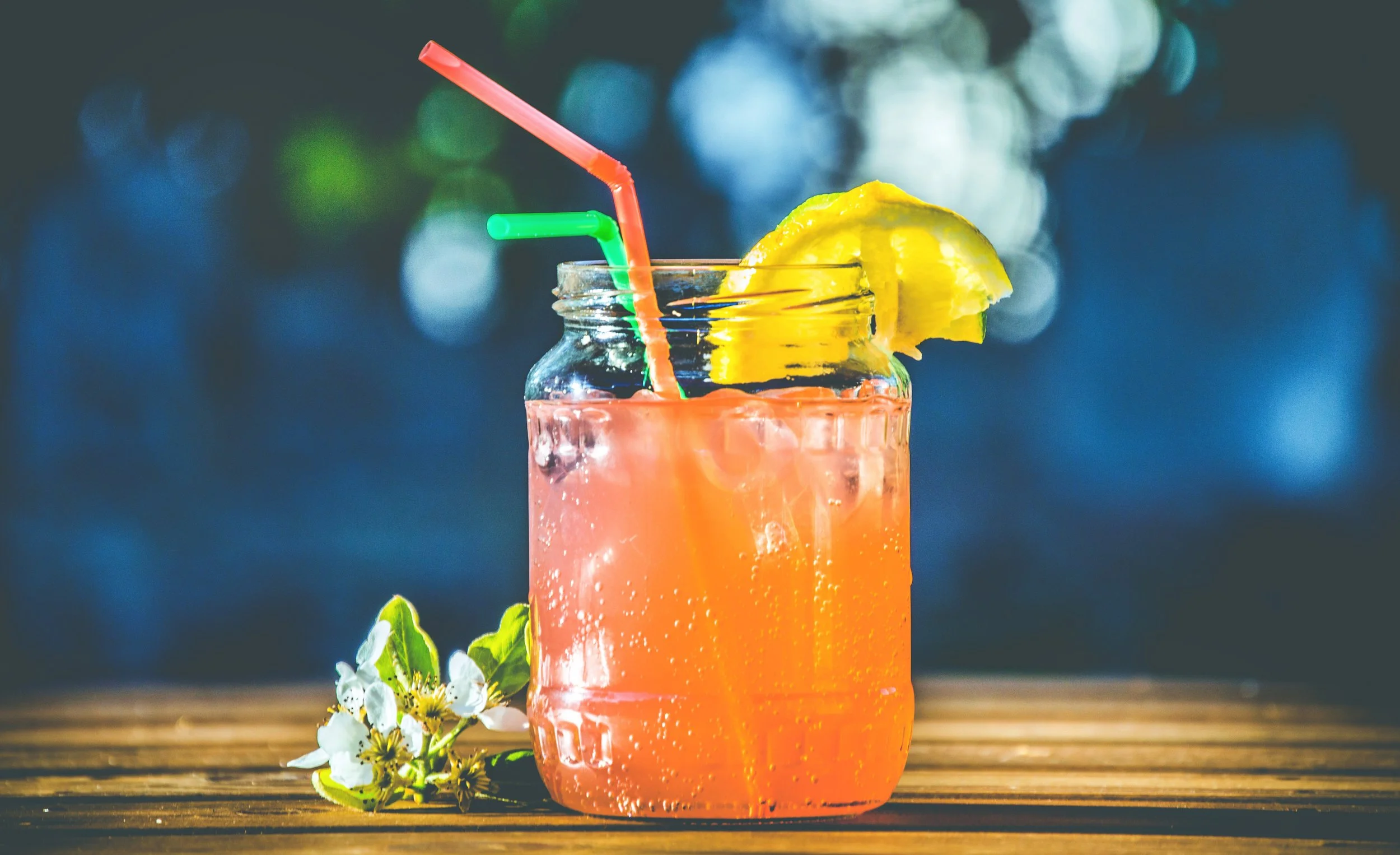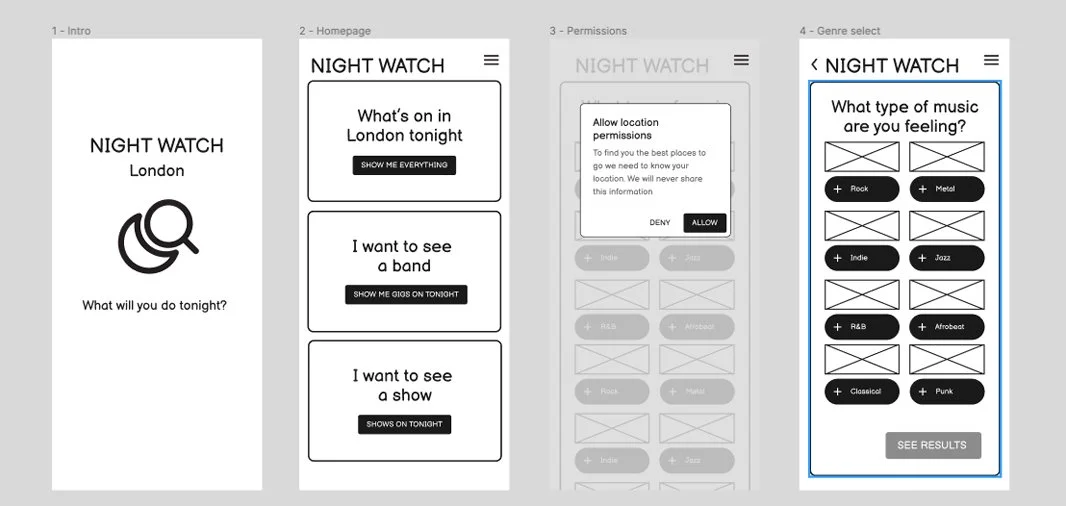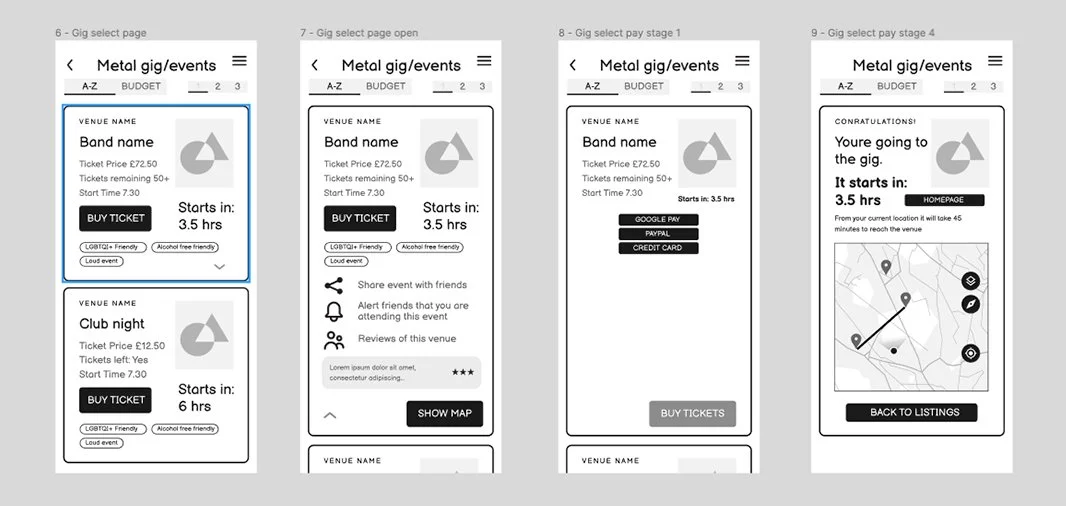The challenge…
As a final project for my Brainstation UX course I was set the task of developing the UX for an app of our choice. I personally spend a lot of my time out in London, trying to find events, exhibitions, gigs, pubs and club nights to go to. I see a lot of the great things happening in the city, but also a lot of the bad.
The nightlife industry in London, whilst flourishing in some areas, is struggling in a lot of others. With threats from developers, margins for pubs getting tighter and the cost of living crisis, affecting the places themselves as well as the customers, is resulting in hundreds of pubs and venues closing down each year. Even larger and more popular venues in central London are struggling to escape this, with G-A-Y recently closing one of its flagship bars just off Charing cross road. Apps to help get more people through the door, by alerting people to their location, what hours they are open, purchasing tickets or if any event or an offer they could use, is a huge benefit to a lot of these venues, bars and clubs.
There are various apps for finding events (planmynight, fever) for buying gig or show tickets (eventbrite, Twickets, Dice, Skiddle, fatsoma, Resident advisor) or finding out closing times (Google, Bing), but none that have all of these features combined in a single app with a clear interface, that also provides live real time updates and recommendations.
I wanted to create an app that will find events, gigs and bars that have available tickets or bookings on that specific day or night. In the day the app can find and book tickets to the gigs/clubs but after 7.30 it will transition to finding bars or clubs that are still open and available to visit. The next day the app resets to show you only the events for that day. This avoids having thousands of search results to look through, particularly if you can localise to the area you are currently in.
Goals
Only having information for the specific day you are looking for, making the results page a lot clearer with far less, but more refined results and clutter than other apps.
Streamlining information access to opening times, locations, offers and types of event or bar/pub.
A very detailed map feature that is integrated into the app and shows your location and the directions and times to where you are heading.
Social integration, to find people who are also going to the same event as you.
Lots of feedback from users and reviews, links to Tiktoks of people that have may have already been.
Research and Analysis
The investigative phase of this project encompassed a thorough analysis of market competitors, alongside interviews and online questionnaires.
The largest competitors for this type of nightlife app are Dice, Resident Advisor, Eventbrite, Fever and Design my night. I looked at the ticket purchase process, the recommendations, and a number of other key areas of each of the apps, including which ones were missing
I interviewed friends and family (age range around 18-55) who lived in and around London and tried to get a diverse mix of people, I know like different types of music, shows, bars and events.I conducted five face to face interviews using the questions I wrote based on my goals and my research of competitor apps.
I also added them to a Google questionnaire that I subsequently shared on my social media channels. This proved very helpful in obtaining a far greater amount of interesting and useful data from a larger audience.
For this I didn’t require long answers or to fill out every question, just as much as they wanted to do. But the replies to this included a lot of things I hadn’t initially thought about. Including Specific filters for people that want a more LGBTQIA+ experience, those who don't want to drink alcohol and those that want a more inclusive, accessible night for disabled or wheelchair users
From this data I started some user Persona and Journey Mapping to help create detailed user personas to understand the target audience.
Insights
From the research and interviews I discovered that people want things that are also fun for non drinkers and more LGBTQ+ venues. A lot of people also said they would like a feature that showed how loud the venue was or what state the toilets are in. Personalisation was important to people too, with an AI function that recommends based on previous events attended and an “i’m not interested” button to remove unwanted suggestions .
Access a comprehensive database of London venues, including clubs, bars, and special events: Users have a diverse range of options, ensuring they can find venues that match their preferences, whether it's for music genres, atmosphere, or special themes.
Sharing with friends: Most important to people seems to be being able to share with friends and other users, before the event to buy the tickets or letting them know what bar you are going to so you can let them find you. Users can easily share plans and locations with friends, facilitating group planning or maybe finding a new friend who is into the play/band/artist they are going to see.
Maps to show where the venue is and how to get there: Most people said that maps were very important, to see how far away the event or bar is and then also to know how they will get there and how long that will take (with time based alerts) Eliminating the hassle of navigating unfamiliar areas, making it easy for users to reach their chosen destination quickly and efficiently. Also an option to optimise time and minimise travel costs by choosing nearby venues.
Personal recommendations & Live updates:
People said a lot that they want the app to be tailored to things they already like and are interested in, which means them telling the app what kind of bar or genre of music they like etc. Receiving personalised venue suggestions based on user preferences and past activities.
User Reviews and Ratings:
Access user-generated reviews and ratings for each venue, including Tiktoks, to help make informed decisions about where to go based on the experiences of others, ensuring a more fun night
LGBTQ+ & Alcohol free
A lot of people said they would like information about LGBTQ+ focused nights, promoting inclusivity within the London nightlife scene. The alcohol free is harder to add as most places will generally have an alcohol free option, but some venues have better options such as alcohol free cocktail menus.
Target audience:
The target audience of the app will be 18 to 45, the most likely age group to be heading to bars, pubs etc and that would participate with the social aspect of the app. It should however still be useful to over 40’s as it will be designed for ease of use, and will still suggest theatre tickets, galleries and gigs
Platforms:
The app would also be limited to iOS, Android and other mobile based operating systems as with the high likelihood of the user being out and about in London already, a desktop and web version of the app would not be useful. It should consider scalability, security, and data privacy from the outset.
Design
Thanks to the initial sketches I had a rough idea of the user flow to create wireframes to visualize the app's layout and user interface. Concentrating first on the Alex Mitchell persona, who is looking for a gig ticket or a night out in a metal club. One of these flows shows the user journey to buy a gig ticket, through to purchasing and then getting directions to the venue, and a time until the event countdown. The second one (after 7.30) shows finding a club night and getting directions (no purchase required)
UI Prototypes
Although the Wireframes were adequate for showing the user flow for this particular project, I wanted to show at least a small part of it with actual UI design, as it always helps when visualising what a finished app could look like.
This is a working mock up of user flow of the previous wireframe, Alex Mitchell’s user journey to purchase a gig ticket.
Learning Outcomes & Idea Progression
Having been a UI designer who has worked on UX projects before, but never been on any official courses before it was really interesting and quite challenging to fully incorporate the principles of UX into something from beginning to end. It was great to gain hands-on experience with conducting user research, creating personas, wireframing, prototyping, and conducting usability tests.
The project not only honed my practical skills but also instilled in me the importance of empathy for users. Not just assuming everything that I would want in the app is what everyone would also want. I've learned that UX design is not just about crafting beautiful interfaces but about solving complex problems and ensuring that every user's needs are met. Iterative design really results in the app being far better looking, having more new ideas and features and being more streamlined and easier to use.
Although only a case study project, if I were to progress with more time and budget to further my app idea I would hope to achieve the following:
Carry out a lot more market research, based on what I have already conducted. Lots more interviews and user feedback.
More iterations of the design and to have finalised wireframes and prototypes for the entire app. Lots of user testing to make sure the user flow was right and the design up to industry accessibility standards
Explore various monetisation options such as premium features, in-app advertising, sponsored event listings, and partnerships with venues for ticket sales and promotions.
If the app gained traction in London, it could be expanded to other major cities in the UK and potentially internationally to cater to a broader audience.
Add more features that create a sense of community within the app more in app reviews rather than them being pulled from other sites and more user-generated content sections to encourage users to engage and connect.
Marketing and Promotion: Develop a pre-launch marketing strategy to build anticipation of its release. Contact social media, influencers, and content marketing to create awareness. Plan a launch event or promotional campaign to attract initial users.
Monitor key performance indicators (KPIs) and adjust strategies as needed. Consider adding new features or expanding the app's functionality based on user demands.
